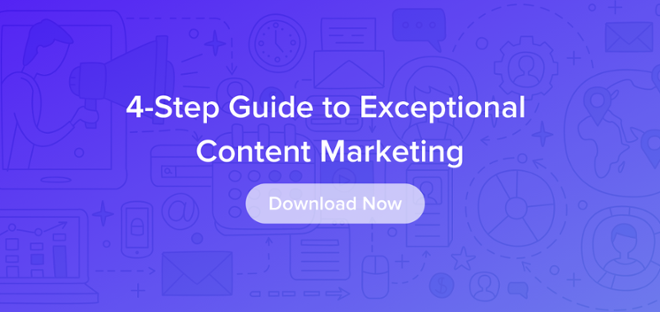 For the first time since it began collecting and reporting data on the content marketing practices of B2B marketers, the Content Marketing Institute found that the two most important organizational goals of content are lead generation and sales.
For the first time since it began collecting and reporting data on the content marketing practices of B2B marketers, the Content Marketing Institute found that the two most important organizational goals of content are lead generation and sales.
The movement away from brand awareness to lead gen and sales means marketers are under more pressure than ever to create and distribute content that attracts and nurtures qualified leads into sales. From awareness to decision, prospective customers are looking for high-quality content to help them make their best purchases. To achieve content marketing ROI, marketers need to understand how to create and leverage the kind of content prospective customers are looking for on their journey to a purchase decision.
Content Creation Using a Holisitic Approach
As much as it’s an accurate description of what you do, the term “content marketing” might imply that content creation and promotion is your responsibility alone, and that’s not the case.
Because you and the rest of your marketing team don’t usually interact directly with current clients or maintain communication with each lead in your sales pipeline, you aren’t privy to the exact pain points they’re citing, questions they’re asking, and common objections they’re raising. And without the insight and experiences of the people who are engaging every day with current and prospective customers, you’re missing an opportunity to create the kind of content that visitors are specifically looking for at each stage. Content affects buyers in every stage of their interaction with your company, and therefore every department should be involved in your content creation.
Take your sales team, for example. Sales members can provide you and your team with understanding the exact pain points customers want your company to address (and the most common objections they have during the sales process). Your marketing team can take that information and craft content that positions your company as the best solution to those specific pain points — and address your prospective customers’ most pressing objections.
Your account and customer representative teams can better explain the points in a typical customer’s lifetime with your company, from a general perspective to highs, lows, and reasons for leaving. You can use this information to educate current clients about the value your company delivers, the best ways to use your services, and what prospective customers can expect.
Your IT department can function as a creative team: the people developing your company’s product or improving the UX of your company’s service. This team can provide you with insight into the innovative technologies and design principles — as well as how it’s the Midas touch in content marketing, for example — your company is using, and this info can become the base for some content used to showcase your forward-thinking team and the ways you’re improving client experience.
Regardless of who you choose to include in your content creation, your sales team can benefit from your content and convert more leads if each piece includes these elements:
- Strategic byline: Readers see photos, read bios, and have opportunities to click the social profile links to content authors on nearly every published article. Make the most of that space by including a solid, compelling bio, a quality headshot, and an updated social profile.
- Personal story: Anecdotes are king in storytelling for a reason — they automatically make a story more personal, relatable, and interesting. If you can tell a good story to readers, you can hook them into reading more.
- Thought leadership: Don’t be overly promotional in every piece of content you create. Remember, it’s about delivering value, providing education, and establishing your author and your company as leaders in your industry.
- Call to action: Let your readers know what to do next after finishing your article by including a call to action. Provide a link to your blog or a whitepaper download, and make sure they know exactly what to expect when they click through.
- Tracking URLs: Speaking of links, you need to use tracking URLs within your post to show your team what readers clicked most. This will show you where leads come from and what content is proving more effective.
How Content Affects Customers’ Buying Decisions
Our marketing team uses a three-part funnel that complements the buyer’s journey to create content from Influence & Co.’s internal experts — from account services to IT and sales — that reaches our target audience and is effective at each stage.
Top-of-Funnel Content
This content is what starts and drives the inbound marketing process with your leads. It’s where more fun, shareable pieces of content are published and distributed to attract new eyes and engage visitors. Content should be educational and help individuals connect the dots from the identified problem to possible solutions, and this content could take the form of an e-book or guest-contributed article at an industry publication your audience is already reading.
At this stage, you should be utilizing calls to action to direct visitors to your gated content. This will lead the reader to more in-depth content and a better understanding of the subject to help them move to the next stage of their journey. If they like what they see, they’ll opt in, and you’ll gain a new name and new information for your database.
Middle-of-Funnel Content
At this stage, content should be focused on nurturing your best leads further down the funnel. It should dive into the complexities and expertise required to effectively overcome their specific problems, present various solutions, and offer education and tools needed for your readers to implement potential solutions.
Content here can take various forms. Although content at this stage can be slightly more product- or service-oriented, your content — from whitepapers and e-books to best practices guides and comprehensive blog posts — should continue delivering value, establishing trust, and engaging your audience.
Bottom-of-Funnel Content
By the time leads have made it to the bottom of your funnel, they’re ready for content that’s more sales-heavy. It should focus on positioning your company as the best solution, and you can do this through case studies, comparison sheets, and trial offers that really drive home why your company is an ideal solution to their problems.
Content served up to bottom-of-the-funnel leads should continue to develop trust and credibility and communicate urgency. At this point, it’s also important to touch on the functionality and benefits of your offerings. This is the content that enables your sales team to close the gap between best practices and your products or services.
From the first to the final stage in your customers’ journey to a purchase decision, they’re going to see and interact with your content. Thus, each department must be a familiar and active participant in your content process. By incorporating the insights, experiences, and expertise of various team members and department leaders in your content — and leveraging that content within your funnel on the buyer’s journey — you’re ensuring that your marketing and sales teams have the best content to generate new leads and close those qualified leads into sales.
If you're still unsure whether or not your team is creating the highest quality content, download your 4-step guide below:



 For the first time since it began collecting and reporting data on the content marketing practices of B2B marketers, the
For the first time since it began collecting and reporting data on the content marketing practices of B2B marketers, the 



